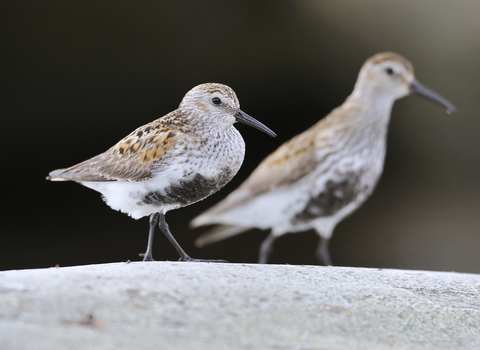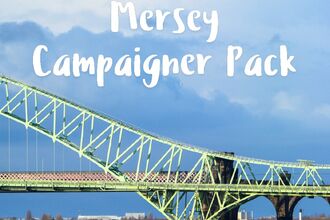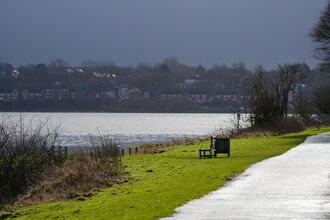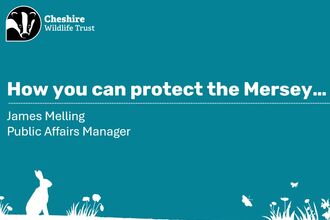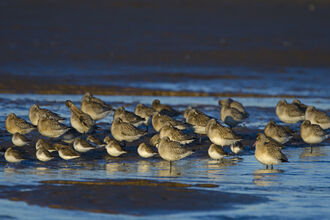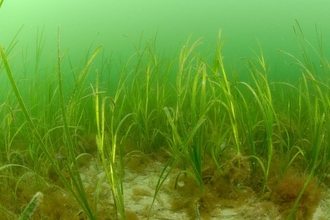Over the years, the Mersey has become a real success story for environmental action, that transformed its toxic waters, once the most polluted river in Europe, to a haven for wildlife.
But it needs our help again...
The Mersey Estuary is being threatened by a tidal barrage and upstream the wider river is being polluted from multiple sources such as misconnected plumbing in households and agricultural runoff.
Actions and Information
Here is some information on the things you can do to help the River Mersey:
The Mersey Tidal Barrage: the story so far...
In 2024, the Liverpool Combined Authority voted to explore constructing a tidal barrage across the River Mersey. While harnessing the river’s tidal energy is not a new idea, we have now reached a point where a formal planning process has been triggered.
Potential impacts will not be confined to where the barrage is constructed and could extend to the entire tidal basin of the River Mersey, from the coasts of Liverpool and Wirral all the way up to Warrington.
The Mersey Estuary is full of protected habitats and any barrage would cause serious disruption to the tidal cycles that maintain them. We do not yet know the true extent of the scheme (and neither do the developers) but something of this size and scale will have significant consequences for the region.
With potentially fewer coastal wetland habitats around the estuary, there is a risk that heavy rainfall, combined with high tides, could mean that Merseyside and Warrington may sustain more intense river flooding. Such a result would not only be devastating for wildlife but could cause millions of pounds in damage and potentially even displace people from their homes.
What wildlife calls the Mersey home?
The Mersey Estuary has a complex mix of tidal mudflats, saltmarshes and rocky shores which are home to rare species of plants and animals. It is a crucial site for biodiversity, both on a national and international scale.
The river sits on a major migration route for birds that come from around the world. In the spring and autumn, many birds from Europe, Canada, and Siberia flock to the estuary as they seek out their preferred climate and feed on the available worms, molluscs, shellfish, and insects.
The estuary is internationally important for species such as black-tailed godwit, redshank, ringed plover, shelduck and dunlin and nationally important for species such as lapwing, teal, pintail, and Eurasian curlew.
In addition to the hundreds of thousands of birds, the river itself also supports marine mammals such as otters, dolphins, harbour porpoises, and seals. The waters also play host to important populations of European Eels, which are a key part of marine food chains but are globally critically endangered.
Improvements in water quality over the decades have led to the return of Atlantic Salmon. The postindustrial cleanup of the Mersey saw the toxic legacy of past chemical industries give way to the species which had suffered a 100-year absence from its waters.
The presence of these important and threatened species as well as their habitats makes for one of the most important sites for biodiversity in all of Cheshire and Merseyside.
Rights of Rivers
Rights of Rivers is a movement that involves local councils giving a river the same rights as a living person. These rights include but are not limited to:
-
The right to flow
-
The right to perform essential functions within its ecosystem
-
The right to be free from pollution
-
The right to feed and be fed by sustainable aquifers
-
The right to native biodiversity
-
The right to regeneration and restoration
These rights are intended not only to ensure the health of rivers, but also the health of watersheds and river basins of which rivers are a part, as well as the health of all ecosystems and natural beings therein, all of which possess, at minimum, the fundamental rights to exist, thrive, and evolve.
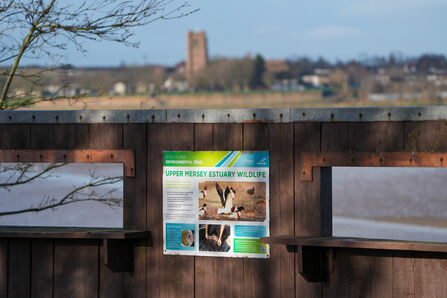
Further reading and information
Why we need climate action AND healthy nature for a thriving economy
The UK’s commitment to net zero and reducing carbon emissions is vital and nature is also part of that transition. Political leaders must consider the role that healthy nature plays in absorbing carbon and helping us cope with the impacts of climate change.
The Dasgupta Review (commissioned by the UK Treasury) highlighted the need to start factoring in nature or ‘Natural capital’ when we measure economic progress. It remarked: “Natural capital accounting is a necessary step towards the creation of inclusive wealth accounts. It enables us to understand and appreciate the place of Nature’s services in our economies, including the services that are usually overlooked.”
When habitats are destroyed, we lose the vital natural services they provide for free. Wetlands help us cope with high intensity rainfall, helping prevent flooding. They also lock up huge amounts of carbon that stay in the ground instead of our atmosphere. If destroyed, these habitats and the benefits they provide are lost. The cost of replacing these lost services (e.g. through manmade flood defences) is often far more costly than if we avoided destroying those habitats in the first place.
What is the impact of interfering with our rivers?
Our wetland habitats act like sponges, helping absorb and store extra water during wet weather and providing vital cooling in warm weather. Many of our rivers have been modified over the years, straightening their natural meandering forms, canalising them and disconnecting them from their floodplains. Such interventions have resulted in many of these wetland habitats being lost. We are now well aware that rivers need to be returned to their natural state so we can realise the benefits they bring.
While tidal barrages can regulate flooding from tidal surges, there are additional flood risks to consider. Changes in tidal flows can lead to the erosion of sensitive habitats like saltmarsh and sandflats which act as natural flood defenses. Changes in the river flow can also lead to increased flooding upstream where the river’s flow patterns are disrupted and drainage is reduced. These were risks identified for a barrage proposed for the River Severn and have the potential to be relevant in the Mersey.
The River Mersey has already suffered significant modification from the Manchester Ship Canal and the industrialization of its banks. A tidal barrage across its waters would ultimately take it even further away from its natural state and put parts of the region at greater risk of flooding.
What is a tidal barrage?
A tidal barrage is a dam-like structure that can be built across the mouth of an estuary. During low tide, the gates of the barrage are open, allowing water to pass through. At high tide, the gates are shut, holding back the water. Once the tide has subsided on the seabound side, the gates open again and the force of the water passing through the turbines generates electricity.
Controlling and changing the tide has significant environmental impacts because it disrupts the natural tidal cycle of the marine environment. The mudflats and saltmarshes that characterise the estuary depend on the tides. At high tide, they are submerged and at low tide they are exposed to create a feeding zone rich in life. Any interference with the tides (such as changes in water level, sediment loads, and salinity) risks the disruption of the delicate balance that creates and maintains these sensitive and irreplaceable habitats.
Is a tidal barrage sustainable?
Sustainability is not just about net zero, it is also about considering the full impact of a project on the natural environment, including on wildlife. Potentially irreversible changes caused by the construction of a poorly designed barrage (such as the design that was put on hold in 2011) could risk destruction of this incredibly important ecosystem and the survival of the species that rely on it.
There is also the question of the amount of CO2 created through the construction of the barrage. The concrete and cement industry is one of the most carbon intensive industries, producing an estimated 8% of global emissions. A barrage across the Mersey would require enormous amounts of concrete raising the question of how long it’d have to operate for before it could even cancel out the cost of its carbon footprint. It is currently unknown whether it will even reach this point.
What protections does the Mersey have?
A UNESCO treaty protects the sensitive wetland habitats of the world. The Mersey is home to three such ‘RAMSAR’ sites:
- The Mersey Narrows and North Wirral Foreshore: stretching from Secombe to New Brighton to Hoylake
- The Mersey Estuary: spanning between Rock Ferry, Ellesmere Port, Runcorn and Liverpool.
- The Ribble and Alternate Estuaries: the section stretching from Crosby to Formby.
The Mersey also receives additional protection on a European level as a Special Protection Area (SPA), nationally through several Special Sites of Scientific Interest (SSSI) for the wetlands and habitats. Several areas of land adjacent to the river and estuary are also designated as Local Wildlife Sites for their habitats.
The estuary also provides a range of ecosystem services to us in terms of flood prevention, carbon storage, recreation and local economy.

